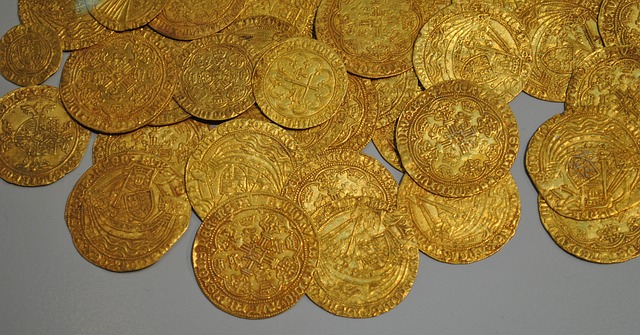A Collector’s Guide to Rare British Coins with High Value
The allure of rare British coins captivates collectors and investors alike. These miniature pieces of history offer a fascinating glimpse into the past while potentially holding significant monetary value. Let's explore the intriguing world of rare British coinage.

What are the most sought-after rare British coins?
Among the most coveted British coins are those with historical significance, limited mintage, or unique characteristics. The 1933 George V Penny stands out as one of the rarest and most valuable British coins. With only seven known examples, it commands extraordinary prices at auction. Another highly sought-after coin is the 1937 Edward VIII Gold Sovereign, which was never officially released due to Edward’s abdication. These coins represent the pinnacle of British numismatics and are prized by serious collectors worldwide.
How do age and historical context affect coin value?
Age and historical context play crucial roles in determining a coin’s value. Generally, older coins tend to be more valuable, especially those from significant periods in British history. For example, coins from the Tudor era or those minted during the English Civil War often command premium prices due to their historical importance. However, age alone doesn’t guarantee value. The coin’s condition, rarity, and historical narrative all contribute to its overall worth in the collector’s market.
What role does condition play in rare coin valuation?
Condition is paramount when assessing the value of rare British coins. Numismatists use a grading scale to evaluate a coin’s state of preservation, ranging from poor to mint state. Coins in exceptional condition, particularly those that have never been circulated, can fetch significantly higher prices than their worn counterparts. Even slight differences in condition can lead to substantial variations in value, making professional grading services an essential part of the rare coin market.
How does mintage affect the rarity and value of British coins?
Mintage numbers significantly impact a coin’s rarity and, consequently, its value. Coins with low mintage figures are naturally scarcer and often more desirable to collectors. For instance, the 1917 King George V Gold Sovereign, minted in London, had a very limited production run, making it extremely rare and valuable today. However, it’s important to note that mintage alone doesn’t determine value; factors like survival rate and historical importance also play crucial roles.
What unique features make certain British coins more valuable?
In the world of British numismatics, certain unique features can dramatically increase a coin’s value. Error coins, such as those with misspellings or incorrect designs, often command high premiums. The 1983 New Pence 2p coin, mistakenly struck with the old wording, is a prime example. Patterns and proofs, which are specially struck coins not intended for circulation, also tend to be highly valued. Additionally, coins with interesting provenance, such as those from famous collections or with royal connections, can attract significant interest from collectors.
How do rare British coins compare in the global collectors’ market?
| Coin | Country | Estimated Value (GBP) | Key Features |
|---|---|---|---|
| 1933 George V Penny | UK | 100,000 - 200,000 | Extremely rare, only 7 known |
| 1937 Edward VIII Gold Sovereign | UK | 500,000 - 1,000,000 | Never officially issued |
| 1703 Queen Anne Vigo 5 Guineas | UK | 200,000 - 300,000 | Made from captured Spanish gold |
| 1795 US Flowing Hair Dollar | USA | 1,000,000 - 1,500,000 | First US dollar coin |
| 1343 Edward III Florin | UK | 500,000 - 700,000 | Extremely rare medieval gold coin |
Prices, rates, or cost estimates mentioned in this article are based on the latest available information but may change over time. Independent research is advised before making financial decisions.
Rare British coins hold their own in the global collectors’ market, often rivaling or surpassing the value of rare coins from other countries. The historical significance of British coinage, coupled with the long-standing tradition of coin collecting in the UK, contributes to their strong position in the international market. While some American coins, like the 1794 Flowing Hair Silver Dollar, have achieved record-breaking prices, rare British coins consistently perform well at auctions and in private sales. The global appeal of British history and culture also adds to the desirability of these coins among international collectors.
In conclusion, rare British coins offer a compelling blend of historical significance, artistic beauty, and potential financial value. From ancient Celtic coins to modern minting errors, the field of British numismatics provides endless fascination for collectors. While the most valuable specimens may be out of reach for many, the diverse range of British coins ensures that there are exciting opportunities for collectors at all levels. As with any collectible market, knowledge, patience, and careful research are key to building a rewarding collection of rare British coins.




